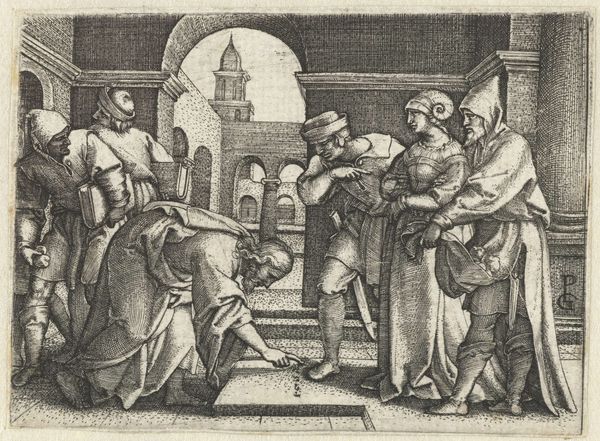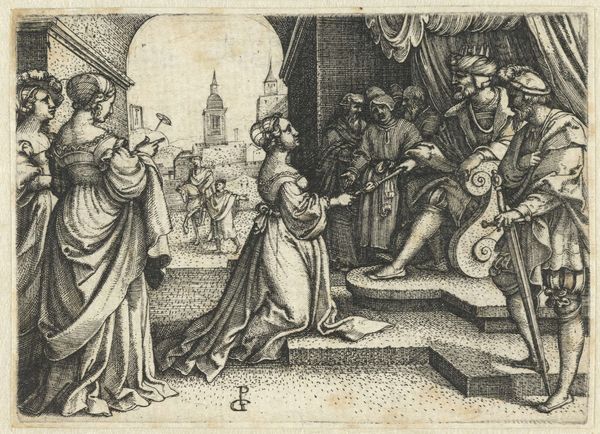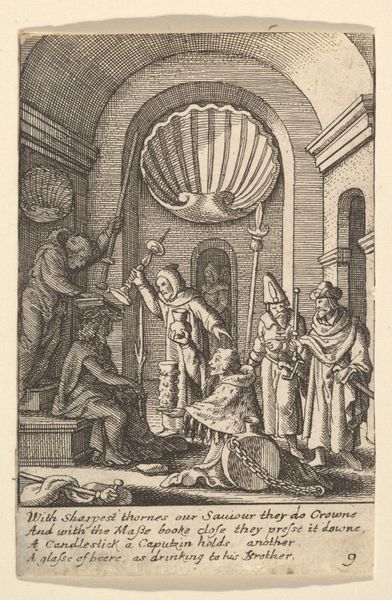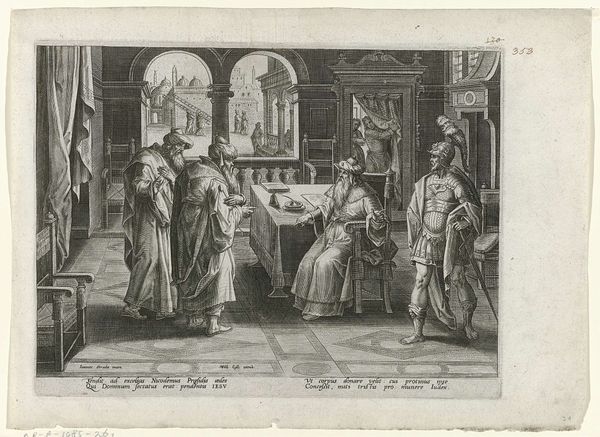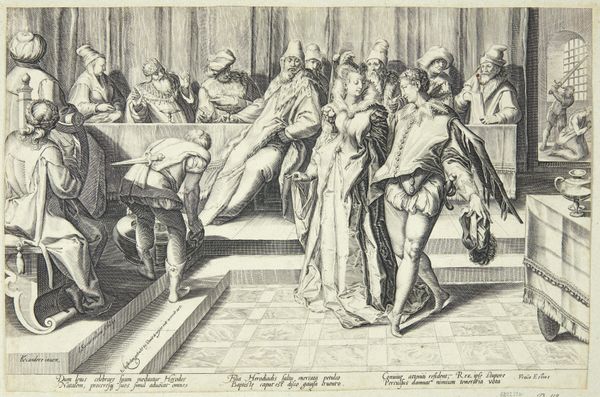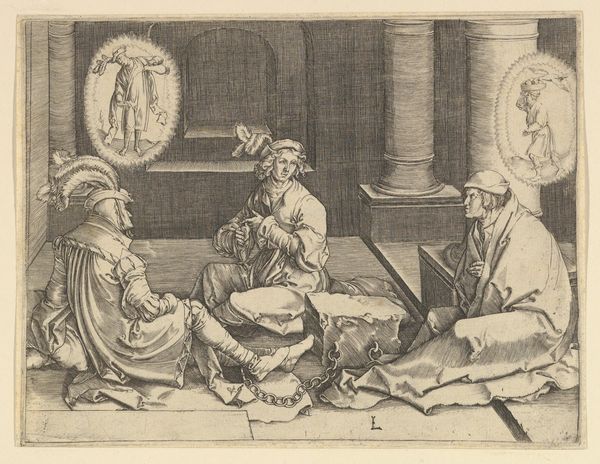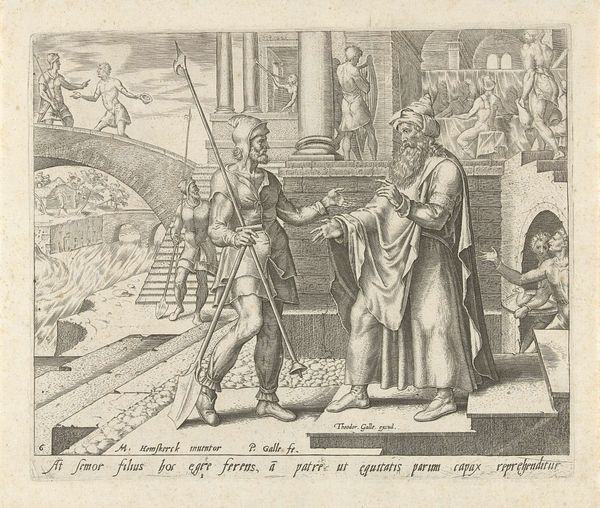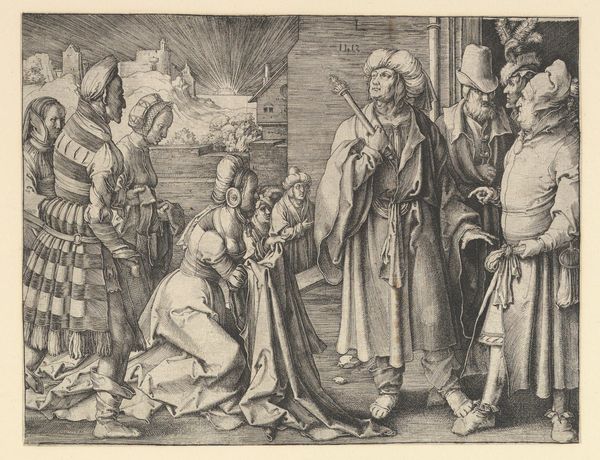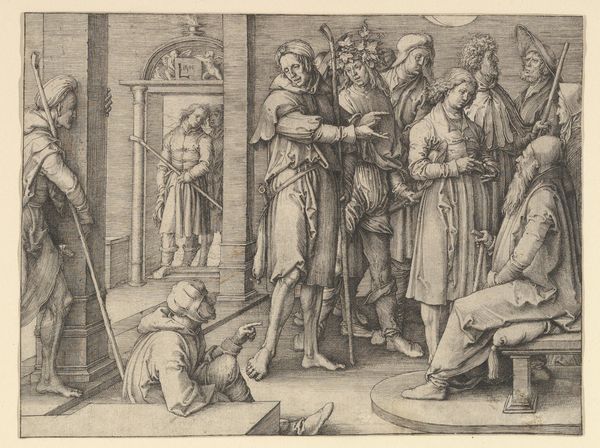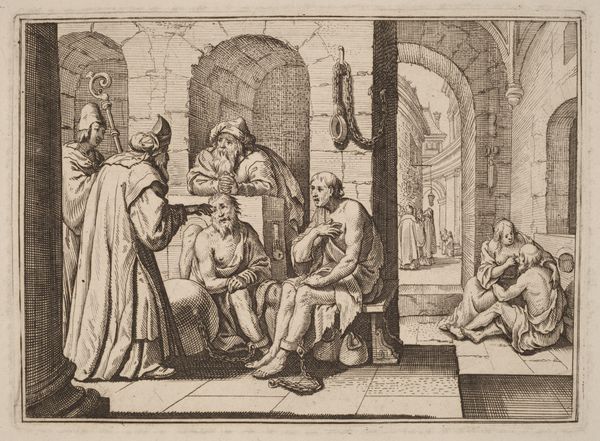
print, engraving
#
ink drawing
#
narrative-art
#
baroque
# print
#
figuration
#
history-painting
#
engraving
Dimensions: height 165 mm, width 225 mm
Copyright: Rijks Museum: Open Domain
Curator: What a striking image. "The Judgement of Solomon", created around 1597 by Cornelis Drebbel, showcases a pivotal biblical scene rendered in engraving. It's part of the Rijksmuseum's collection. Editor: There's a raw intensity to it, isn't there? The stark contrast, the chaotic energy channeled through fine lines...it creates a visually compelling narrative even before you delve into the subject matter. Curator: Exactly! The printmaking process itself—the laborious act of carving into the metal plate, the deliberate transfer of ink—speaks volumes about the intent to disseminate this powerful story to a wider audience. These prints were commodities circulating ideas. Editor: Notice how Drebbel uses the formal structure to highlight the drama. Solomon sits elevated, framed by architectural lines and onlookers, all directing attention to the child and the two mothers. The semiotics of the characters create an implicit message. Curator: It's fascinating how the artist depicts the opulent clothing, which contrasts sharply with the vulnerability of the infant and highlights class structures, reflecting the socio-political environment influencing Drebbel’s commission. What was the market, who consumed it? Editor: Agreed, however, let's not reduce it solely to its socio-political origins. The dynamism he achieves, the subtle tonal variations through careful hatching, it adds another layer to the print, beyond propaganda or historical record. Look how the diagonals contribute to tension, making it unsettling and dramatic! Curator: True, yet even that deliberate composition is serving the narrative purpose of instructing a public eager for accessible images. These biblical scenes held enormous weight because it affected people’s material conditions. The production process underscores how people learned history, morals and judgment through these prints. Editor: Well, both approaches reveal something unique about Drebbel's "Judgement." I find it wonderful. Curator: Absolutely. Reflecting on the work’s conditions and materials illuminates not just artistic ingenuity, but societal values of justice.
Comments
No comments
Be the first to comment and join the conversation on the ultimate creative platform.
